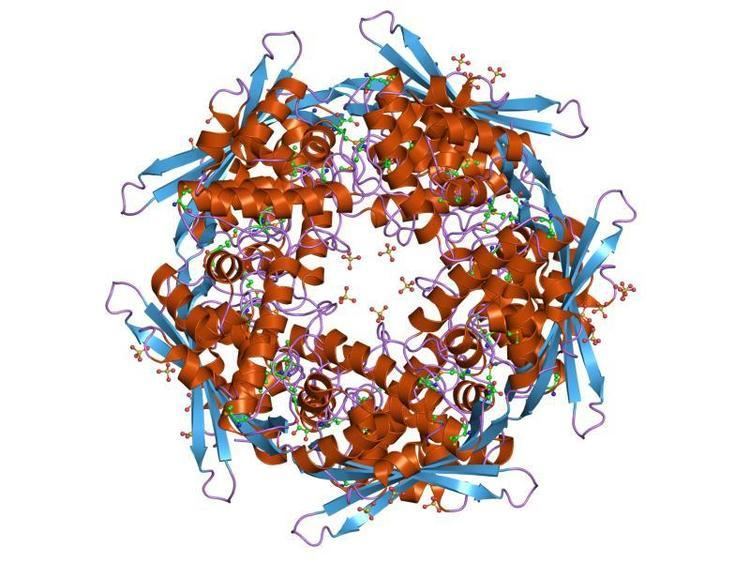EC number 4.2.1.104 IntEnz IntEnz view ExPASy NiceZyme view | CAS number 37289-24-0 BRENDA BRENDA entry KEGG KEGG entry | |
 | ||
In molecular biology, cyanase (EC 4.2.1.104, also known as cyanate hydratase or cyanate lyase) is an enzyme which catalyses the reaction of cyanate with bicarbonate to produce ammonia and carbon dioxide. The systematic name of this enzyme is carbamate hydro-lyase.
Contents
Reaction
Cyanase catalyzes the conversion of cyanate to carbamate (H2NCOO−), which then spontaneously decomposes to carbon dioxide and ammonia:
- cyanate (OCN−) + HCO3− + H+
⇌ carbamate (H2NCOO−) + CO2 - carbamate (H2NCOO−) + H+
⇌ NH3 + CO2 (spontaneous)
The resulting net reaction is:
cyanate (OCN−) + HCO3− + 2 H+Function and structure
Some bacteria can overcome the toxicity of environmental cyanate by degrading it via this enzyme. Cyanate hydratase is found in bacteria and plants. The cyanate hydratase monomer is composed of two domains. The N-terminal domain shows structural similarity to the DNA-binding alpha-helix bundle motif. The C-terminal domain has an 'open fold' with no structural homology to other proteins. The dimer structure reveals the C-terminal domains to be intertwined, and a decamer is formed by a pentamer of these dimers. The active site of the enzyme is located between dimers and is composed of residues from four adjacent subunits of the homodecamer.
